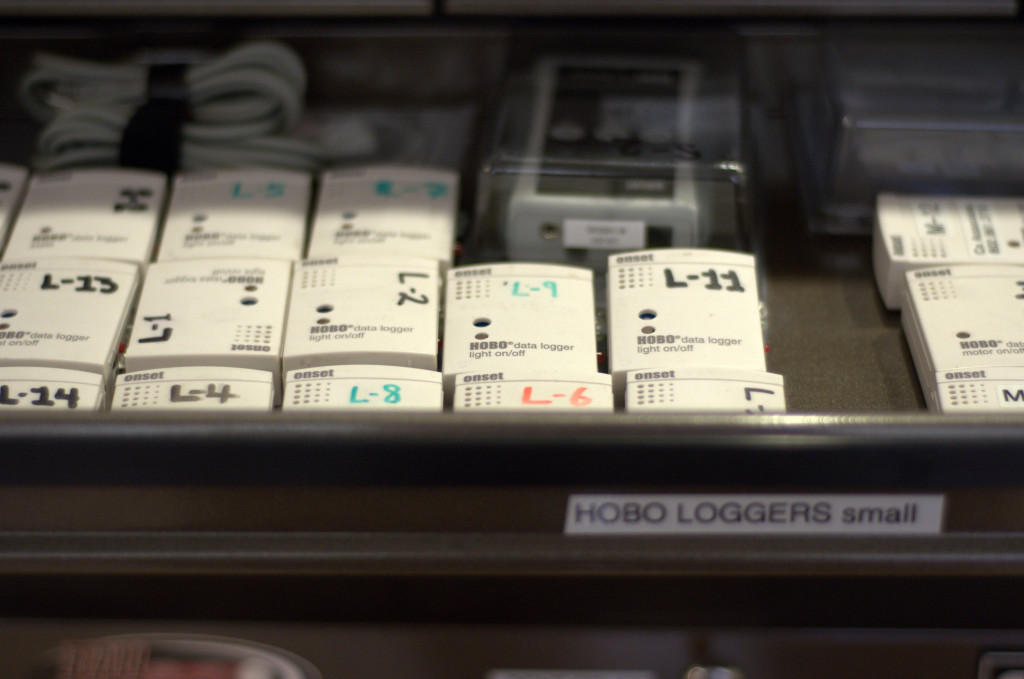In one of Cx Associates’ latest blog posts, Energy Metering Devices: What’s New, Katie Mason describes data loggers (aka energy metering devices) used in the industry to diagnose building system issues and calculate energy consumption. This data collection technology has come of age in that the loggers themselves are not outrageously expensive and modeling software has developed into a strong analysis tool. For a building owner, this means data loggers can clearly diagnose where equipment is operating poorly, triggering increased energy and maintenance costs. Data loggers are also instrumental to managers of local, state or regional energy efficiency programs in order to accurately calculate energy savings attributable to efficiency improvements. Let's look in more detail at these two applications of the new energy metering technologies.
Diagnosing Equipment Operations
As a building owner without a full-blown Building Management System (BMS), you might suspect your equipment is consuming too much energy or not operating correctly, but it’s difficult to pinpoint where the problem lies. Logging items such as air handler discharge temperature, static pressure, damper positions, motor kW, and chilled water temperatures for a short duration can help you diagnose problems in an air handling system. Or comparing sequences of operation of reheat/dehumidification/cooling of computer room air conditioners within a data center can enable you to program the units to stop fighting each other and work together efficiently.
 Inside a data center. Image by Flickr user IntelFreePress.
Inside a data center. Image by Flickr user IntelFreePress.The following graph is a simple depiction of a problem we discovered while retrocommissioning an office building. All rooftop units (RTUs) in this building should be programmed to turn off between the hours of 9:00pm and 6:00am and on weekends. One unit remained on 24/7 at approximately 15kW electrical draw, unnecessarily increasing the building’s energy cost by $9,000 a year.
Accurate Energy Savings through Measurement and Verification
Local, state or regional energy efficiency programs often require measurement and verification (M&V) of the efficiency improvements supported through the program. M&V is a procedure that uses meter data to accurately reflect the energy savings of efficiency projects. In retrofit situations, the equipment energy consumption is metered prior to the efficiency upgrade and again after project implementation. In new construction, metering is performed and savings are calculated using a baseline assumption of standard equipment operations. In a whole building analysis, meter data on HVAC equipment and lighting consumption are used to calibrate a model of the entire building. This calibrated model is run a second time with baseline equipment efficiencies and the difference between the models is the savings attributable to the efficiency improvements. Whole building modeling enables savings attributable to building envelope improvements (insulation, windows, etc.) to also be analyzed and quantified. This modeling is also often used to categorize overall building energy efficiency for LEED and benchmarking.
The following graph is again a simple depiction of how metering can be used to analyze the performance of a building’s energy components. The graph shows the impact of a corridor lighting control measure for which an energy program gave an incentive. The blue line represents the runtime hours of the efficient design, on which savings were based. The red line represents the actual runtime hours metered on-site. As is shown, the runtime hours during the day are slightly less than anticipated (90% versus 100%), but the nighttime run-hours (from 10:00pm to 7:00pm) are 40% rather than 5%. This decreased the savings that the owner and the efficiency program anticipated to achieve from the lighting controls installation.
With the data loggers available in the industry today, we can really see what is happening in the building — from accurately diagnosing equipment issues and calculating energy savings on a detailed level, to enabling overall building performance comparisons between buildings of the same type. If you want to be in the know about the latest energy efficiency technologies and practices, subscribe to our blog.






